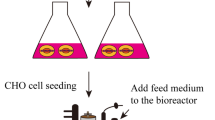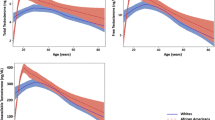Abstract
The majority of cell culture studies have assessed the effect of hormones on cancer cell growth using media supplemented with charcoal-treated fetal bovine serum (CTS). We aimed to determine whether using a system more reflective of the human condition by changing the charcoal-treated serum to an untreated pooled human serum (PHS) resulted in the same hormone responses in breast and prostate cell lines. MCF-7 breast cancer, MCF-10A non-transformed breast, and LNCaP prostate cancer cell lines supplemented with PHS were treated with high and low physiological concentrations of six hormones (17β-estradiol, dehydroepiandosterone (DHEA), dihydrotestosterone (DHT), testosterone, insulin, and glucagon). Cell growth was measured after 72 h of incubation. All hormones stimulated growth of MCF-7 cells (p < 0.05). MCF-10A cell growth was inhibited by DHEA, DHT, and testosterone (p < 0.05), unaffected by 17β-estradiol and glucagon, and stimulated by insulin (p < 0.05). LNCaP cell growth was stimulated by the highest concentration of DHEA and DHT (p < 0.05) and inhibited by the highest concentration of 17β-estradiol (p < 0.05), while insulin and testosterone, had no effect. Overall, PHS lowered the magnitude of the effect of hormones on cell growth in comparison to CTS. Due to the presence of all serum constituents, our model represents a more appropriate physiological environment for determining the effect of hormones on cancer cell growth. Further studies are required to determine the mechanisms by which added hormones interact with the constituents of untreated human serum.

Similar content being viewed by others
References
Arnold J. T.; Le H.; McFann K. K.; Blackman M. R. Comparative effects of DHEA vs. testosterone, dihydrotestosterone, and estradiol on proliferation and gene expression in human LNCaP prostate cancer cells. Am. J. Physiol. Endocrinol. Metab. 288: E573–E584; 2005.
Arnold J. T.; Liu X.; Allen J. D.; Le H.; McFann K. K.; Blackman M. R. Androgen receptor or estrogen receptor-beta blockade alters DHEA-, DHT-, and E(2)-induced proliferation and PSA production in human prostate cancer cells. Prostate 67: 1152–1162; 2007.
Aspinall S. R.; Stamp S.; Davison A.; Shenton B. K.; Lennard T. W. The proliferative effects of 5-androstene-3 beta, 17 beta-diol and 5 alpha-dihydrotestosterone on cell cycle analysis and cell proliferation in MCF7, T47D and MDAMB231 breast cancer cell lines. J. Steroid Biochem. Mol. Biol. 88: 37–51; 2004.
Billich A.; Nussbaumer P.; Lehr P. Stimulation of MCF-7 breast cancer cell proliferation by estrone sulfate and dehydroepiandrosterone sulfate: inhibition by novel non-steroidal steroid sulfatase inhibitors. J. Steroid Biochem. Mol. Biol. 73: 225–235; 2000.
Birrell S. N.; Bentel J. M.; Hickey T. E.; Ricciardelli C.; Weger M. A.; Horsfall D. J.; Tilley W. D. Androgens induce divergent proliferative responses in human breast cancer cell lines. J. Steroid Biochem. Mol. Biol. 52: 459–467; 1995.
Castagnetta L. A.; Miceli M. D.; Sorci C. M.; Pfeffer U.; Farruggio R.; Oliveri G.; Calabro M.; Carruba G. Growth of LNCaP human prostate cancer cells is stimulated by estradiol via its own receptor. Endocrinology 136: 2309–2319; 1995.
Chappell J.; Leitner J. W.; Solomon S.; Golovchenko I.; Goalstone M. L.; Draznin B. Effect of insulin on cell cycle progression in MCF-7 breast cancer cells. Direct and potentiating influence. J. Biol. Chem. 276: 38023–38028; 2001.
Clauson P. G.; Brismar K.; Hall K.; Linnarsson R.; Grill V. Insulin-like growth factor-I and insulin-like growth factor binding protein-1 in a representative population of type 2 diabetic patients in Sweden. Scand J Clin Lab Invest 58: 353–360; 1998.
Eliassen A. H.; Missmer S. A.; Tworoger S. S.; Spiegelman D.; Barbieri R. L.; Dowsett M.; Hankinson S. E. Endogenous steroid hormone concentrations and risk of breast cancer among premenopausal women. J. Natl Cancer Inst. 98: 1406–1415; 2006.
Gayosso V.; Montano L. F.; Lopez-Marure R. DHEA-induced antiproliferative effect in MCF-7 cells is androgen- and estrogen receptor independent. Cancer J 12: 160–165; 2006.
Godden J.; Leake R.; Kerr D. J. The response of breast cancer cells to steroid and peptide growth factors. Anticancer Res. 12: 1683–1688; 1992.
Hirose K.; Toyama T.; Iwata H.; Takezaki T.; Hamajima N.; Tajima K. Insulin, insulin-like growth factor-I and breast cancer risk in Japanese women. Asian Pac. J. Cancer Prev. 4: 239–246; 2003.
Horoszewicz J. S.; Leong S. S.; Kawinski E.; Karr J. P.; Rosenthal H.; Chu T. M.; Mirand E. A.; Murphy G. P. LNCaP model of human prostatic carcinoma. Cancer Res. 43: 1809–1818; 1983.
Jauch-Chara K.; Hallschmid M.; Schmid S. M.; Oltmanns K. M.; Peters A.; Born J.; Schultes B. Plasma glucagon decreases during night-time sleep in type 1 diabetic patients and healthy control subjects. Diabet. Med. 24: 684–687; 2007.
Key T.; Appleby P.; Barnes I.; Reeves G. Endogenous sex hormones and breast cancer in postmenopausal women: reanalysis of nine prospective studies. J. Natl Cancer Inst. 94: 606–616; 2002.
Knapp M. L.; al-Sheibani S.; Riches P. G. Alterations of serum lipids in breast cancer: effects of disease activity, treatment, and hormonal factors. Clin. Chem. 37: 2093–2101; 1991.
Labrie F.; Belanger A.; Cusan L.; Gomez J. L.; Candas B. Marked decline in serum concentrations of adrenal C19 sex steroid precursors and conjugated androgen metabolites during aging. J. Clin. Endocrinol. Metab. 82: 2396–2402; 1997.
Lippman M. E.; Bolan G. Oestrogen-responsive human breast cancer in long-term tissue culture. Nature 256: 592–593; 1975.
Macedo L. F.; Guo Z.; Tilghman S. L.; Sabnis G. J.; Qiu Y.; Brodie A. Role of androgens on MCF-7 breast cancer cell growth and on the inhibitory effect of letrozole. Cancer Res. 66: 7775–7782; 2006.
Maggiolini M.; Bonofiglio D.; Pezzi V.; Carpino A.; Marsico S.; Rago V.; Vivacqua A.; Picard D.; Ando S. Aromatase overexpression enhances the stimulatory effects of adrenal androgens on MCF7 breast cancer cells. Mol. Cell. Endocrinol. 193: 13–18; 2002.
Marshall S.F.; Clarke C.A.; Deapen D.; Henderson K.; Largent J.; Neuhausen S. L.; Reynolds P.; Ursin G.; Horn-Ross P.L.; Stram D.O.; Templeman C.; Bernstein L. Recent breast cancer incidence trends accrording to hormone therapy use: the California Teachers Study cohort. Breast Cancer Res 12: R4; 2010.
McCarty M. F. Up-regulation of IGF binding protein-1 as an anticarcinogenic strategy: relevance to caloric restriction, exercise, and insulin sensitivity. Med. Hypotheses 48: 297–308; 1997.
Ortmann J.; Prifti S.; Bohlmann M. K.; Rehberger-Schneider S.; Strowitzki T.; Rabe T. Testosterone and 5 alpha-dihydrotestosterone inhibit in vitro growth of human breast cancer cell lines. Gynecol. Endocrinol. 16: 113–120; 2002.
Panno M. L.; Salerno M.; Pezzi V.; Sisci D.; Maggiolini M.; Mauro L.; Morrone E. G.; Ando S. Effect of oestradiol and insulin on the proliferative pattern and on oestrogen and progesterone receptor contents in MCF-7 cells. J. Cancer Res. Clin. Oncol. 122: 745–749; 1996.
Rochefort H.; Garcia M. The estrogenic and antiestrogenic activities of androgens in female target tissues. Pharmacol. Ther. 23: 193–216; 1984.
Roddam A. W.; Allen N. E.; Appleby P.; Key T. J. Endogenous sex hormones and prostate cancer: a collaborative analysis of 18 prospective studies. J. Natl Cancer Inst. 100: 170–183; 2008.
Schmitt M.; Klinga K.; Schnarr B.; Morfin R.; Mayer D. Dehydroepiandrosterone stimulates proliferation and gene expression in MCF-7 cells after conversion to estradiol. Mol. Cell. Endocrinol. 173: 1–13; 2001.
Sonne-Hansen K.; Lykkesfeldt A. E. Endogenous aromatization of testosterone results in growth stimulation of the human MCF-7 breast cancer cell line. J. Steroid Biochem. Mol. Biol. 93: 25–34; 2005.
Soule H. D.; Maloney T. M.; Wolman S. R.; Peterson Jr. W. D.; Brenz R.; McGrath C. M.; Russo J.; Pauley R. J.; Jones R. F.; Brooks S. C. Isolation and characterization of a spontaneously immortalized human breast epithelial cell line, MCF-10. Cancer Res. 50: 6075–6086; 1990.
Soule H. D.; Vazguez J.; Long A.; Albert S.; Brennan M. A human cell line from a pleural effusion derived from a breast carcinoma. J. Natl Cancer Inst. 51: 1409–1416; 1973.
Szelei J.; Jimenez J.; Soto A. M.; Luizzi M. F.; Sonnenschein C. Androgen-induced inhibition of proliferation in human breast cancer MCF7 cells transfected with androgen receptor. Endocrinology 138: 1406–1412; 1997.
Tait L.; Soule H. D.; Russo J. Ultrastructural and immunocytochemical characterization of an immortalized human breast epithelial cell line, MCF-10. Cancer Res. 50: 6087–6094; 1990.
Thermo Fisher Scientific. HyClone charcoal/dextran treated fetal bovine serum (2009). Available at: http://www.thermo.com/com/cda/product/detail/0,1055,10139878,00.html. Accessed on April 29, 2010.
Tymchuk C. N.; Barnard R. J.; Ngo T. H.; Aronson W. J. Role of testosterone, estradiol, and insulin in diet- and exercise-induced reductions in serum-stimulated prostate cancer cell growth in vitro. Nutr. Cancer 42: 112–116; 2002.
Tymchuk C. N.; Tessler S. B.; Aronson W. J.; Barnard R. J. Effects of diet and exercise on insulin, sex hormone-binding globulin, and prostate-specific antigen. Nutr. Cancer 31: 127–131; 1998.
Yu H.; Rohan T. Role of the insulin-like growth factor family in cancer development and progression. J. Natl Cancer Inst. 92: 1472–1489; 2000.
Acknowledgments
Source of funding: Dr. David Jenkins’ Canada Research Chair Endowment.
Author information
Authors and Affiliations
Corresponding author
Additional information
Editor: J. Denry Sato
Rights and permissions
About this article
Cite this article
Esfahani, A., Kendall, C.W.C., Bashyam, B. et al. The effect of physiological concentrations of sex hormones, insulin, and glucagon on growth of breast and prostate cells supplemented with unmodified human serum. In Vitro Cell.Dev.Biol.-Animal 46, 856–862 (2010). https://doi.org/10.1007/s11626-010-9351-x
Received:
Accepted:
Published:
Issue Date:
DOI: https://doi.org/10.1007/s11626-010-9351-x




